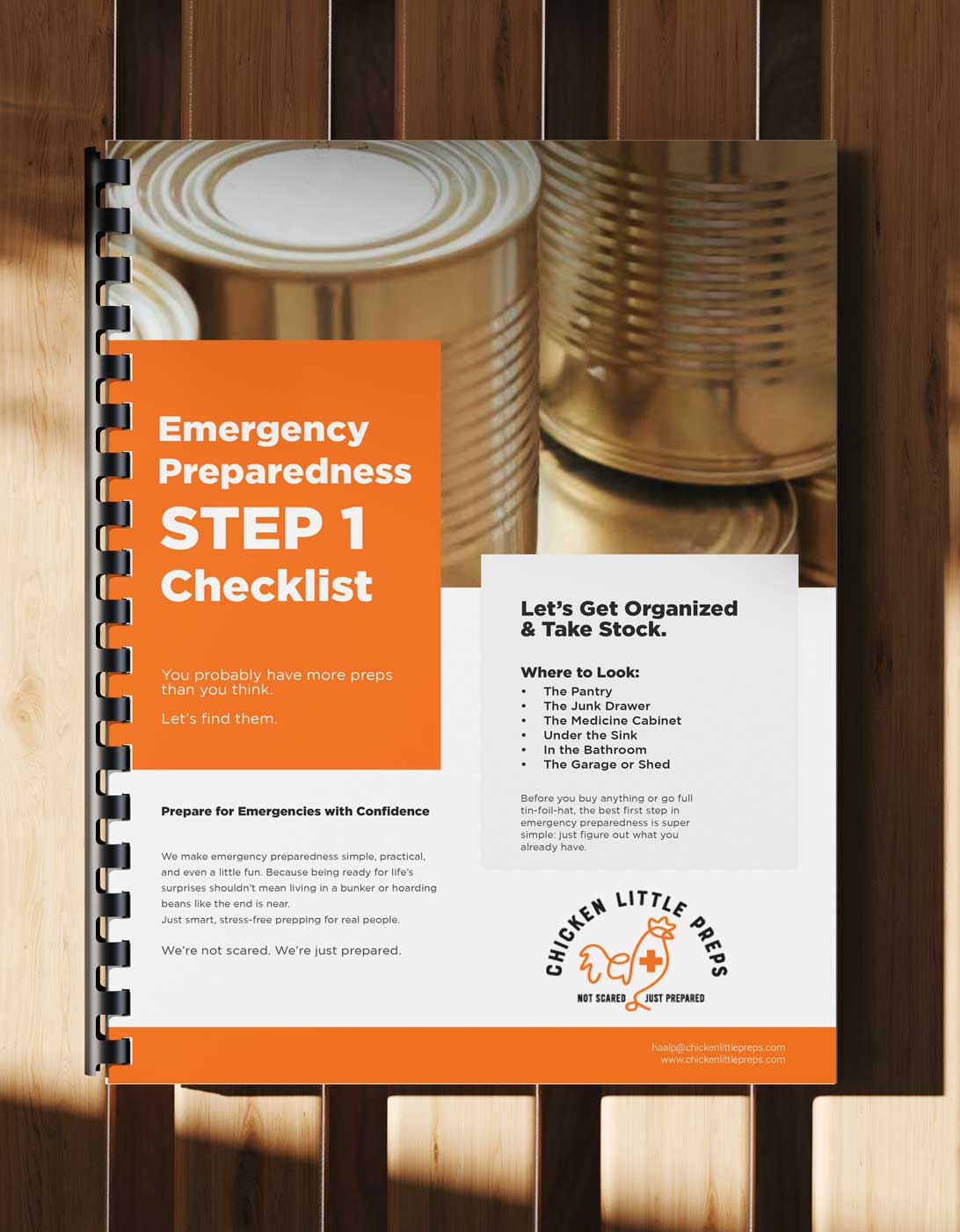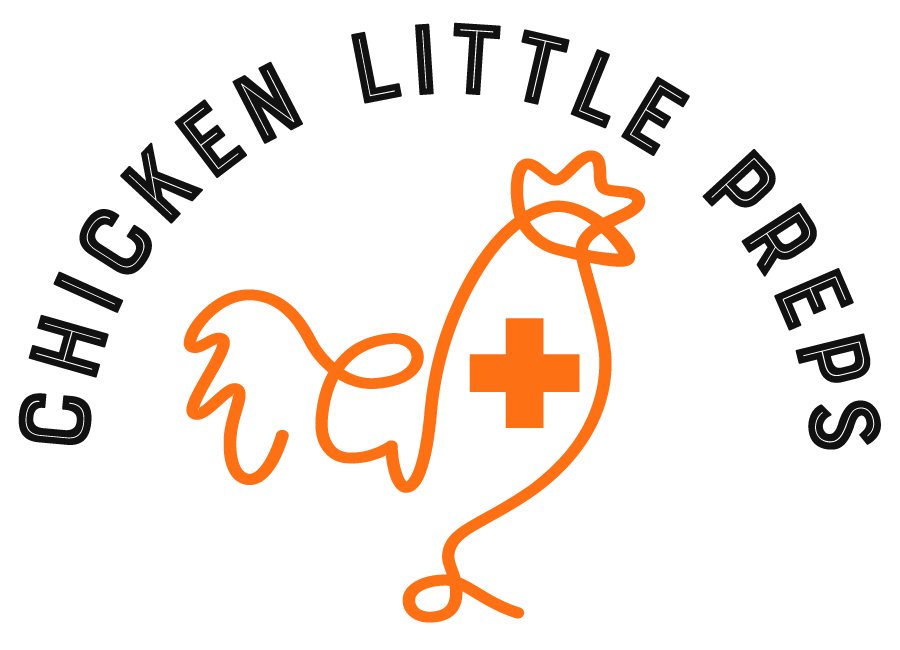Emergency Preparedness Step 4
Build a 14-Day Food & Water SupplyYou’ve mastered the weekend—now let’s prep for a curveball.

Build a 14-Day Food & Water Supply
By now, you’ve got your 72-hour stash tucked away. That’s a huge win. But what happens if things last a little longer—like a two-week storm recovery, supply chain disruption, or just one of those weird “no eggs at the store” weeks?
This is where Step 4 comes in: building a 14-day food and water supply for everyone in your household.
Don’t worry—we’re still not talking about 5-gallon buckets of mystery mush. Just real food, real water, and a bit of smart planning that helps you breathe easy no matter what’s going on outside.
Why This Step Matters
Most emergencies don’t end when the power flicks back on. Storm recovery, job disruptions, or even just being stuck at home due to illness can stretch beyond 72 hours. Having a 2-week supply gives you flexibility, peace of mind, and the ability to say “we’re good” when shelves go bare.
Heads up! Some links in this post are affiliate links, which means we may earn a small commission if you buy something—at no extra cost to you. It helps keep the lights on (literally, in case of a power outage) and most importantly helps us spread the word that prepping can be simple and fun! Thank you for supporting our mission here at Chicken Little Preps.
What to Include in Your 14-Day Food Supply
Build on Your 72 hour Stash
Choose shelf-stable, easy-to-eat foods that your family eats:
-
Canned soups, stews, and chili
-
Beans, lentils, rice, pasta
-
Nut butters, granola bars, crackers
-
Shelf-stable milk or dairy alternatives
-
Canned fruits and vegetables
-
Pouch or boxed meals (mac and cheese, rice kits, pasta sides)
-
Baking ingredients (flour, yeast, oil, sugar)
-
Comfort items: tea, coffee, cocoa, hard candy, chocolate
-
Snacks: trail mix, popcorn, cookies, jerky
💡 Cluck-Worthy Tip: Build “easy meal kits” by grouping ingredients into gallon zip bags or baskets—like canned chili + cornbread mix, or pasta + sauce + shelf-stable Parmesan.
Learn a New Backup Form of Off-Grid ooking
When the power goes out and there’s a storm outside – you’ll want options. Don’t forget to plan for 2 weeks of cooking fuel.
-
Large camp stove or small depending on your needs (don’t forget fuel)
- Portable power station and an electric hot plate
-
Sterno cans + folding stove rack
-
Camping oven or grill (with extra charcoal or propane)
-
Fire pit (if local laws allow)
- A solar oven or thermal bag for a passive cooking option to save fuel
Safety Tips!
- Store fuel safely
- Practice using your gear before you need it
- Don’t cook, even with electric which can spark, if you suspect a gas leak. Be sure to store a few preps that don’t require cooking.
Don’t Forget Manual Cooking Tools
-
Can opener
-
Mixing spoon
- Metal Bowl
-
Cast iron or Stainless pot or pan
-
Pot holders
-
Paper plates and utensils (to save water)
How Much Water Do You Need?
Stick with the same rule. The absolute minimum should include 1 gallon of water per person per day (but 2 gallons would be a lot more comfortable). This includes drinking, cooking, and basic hygiene.
So for 3 days:
- 1 person = 14 gallons
- 4 people = 56 gallons
-
Don’t forget pets! 🐶🐱
Water Storage Ideas:
-
Pre-bottled water (cheap, easy, ready to go)
-
Shelves to stack 5-gallon water bottles, and manual water pump for easy use without power
-
Water container with a spigot for convenient hand and dish washing
-
Bathtub water bladder (extra emergency water for incoming storms)
- Water treatment drops for stored water
- A gravity-fed water filter can help provide clean drinking water for everyday use
Store It Where It Makes Sense
Keep your 72-hour supply somewhere easy to access in a pinch:
-
Store in clear plastic bins with lids in a hall closet or spare room
- Store potatoes and onions in breathable, light-proof containers
-
On a garage shelf (only items that aren’t temperature sensitive)
- Store food and water somewhere cool and dry
-
Under the bed in storage bins
-
Dedicated “emergency shelf” in your pantry
More Storage Tips
- Keep heavy items low (so they don’t crush other stuff or your toes)
-
Label and rotate foods as needed (first in, first out)
-
Keep a basic inventory list taped to the inside of a cabinet or bin lid
Make a Simple Inventory
Keep it casual: just jot down what you have, what you need, and maybe a few “nice-to-haves” for later. You can use:
-
A notes app on your phone
-
A spreadsheet (if you’re fancy)
-
A notebook, clipboard, or printable Chicken Little checklist

Final Thought
This step is less about hoarding and more about household resilience. You’re not panicking—you’re just planning for normal life when things aren’t so normal. And honestly? That’s a pretty empowering move.
Next Up: Step 5 – First Aid Without Freaking Out
Because a splinter in a blackout feels way more dramatic than it should. Let’s get your kit in shape.
Starting a new habit is tough—but staying prepared doesn’t have to be.
Join a community that shares your goals, because together, we can prep for life - not just the next crisis. Subscribe to our email list for friendly reminders, smart tips, and friendly prepping advice.
